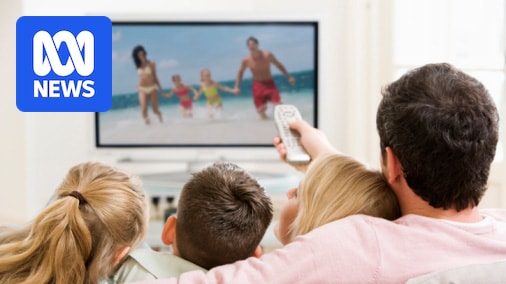Rather than Deloitte’s 2025 Digital Media Trends Report discovered by Deloitte’s 2025 Digital Media Trends Report, audiences are spending more and more entertainment time on social platforms rather than traditional films and television.
Consumers are moving from pay television to streaming services, with time spent on short videos and social platforms climbing.
This change is causing stress in traditional media markets as businesses rush to adjust their business models to combat stagnation.
How do viewers get content?
Deloitte surveyed more than 3,500 US consumers and found media companies and advertisers compete to fill an average of six hours of daily media consumption per person.
In these six hours, most people have a mix of streaming, live television and user-generated content (UGC) on social media, podcasts and more.
Professor Carah says traditional media companies are trying to solve how to leverage short video platforms. (ABC News: Mark Leonardi))
Professor Nicholas Kerr of the University of Queensland said the platform and format mashup has led traditional media producers to change their approach.
“They are basically trying to solve how to create content that works on both streaming and short video platforms,” Professor Carah said.
“There are a lot of streaming shows on Netflix, and there are often dance sequences of this kind. For example, it first appears on Tiktok as a virus trend. That’s not an accident.”
“They’re thinking about how they create moments with shows that translate very well in short videos.”
Twilight on pay TV
Deloitte’s survey suggests that television itself will stay here, with 66% of people watching TV shows and movies on smart TVs, compared to 12% of audiences who prefer to watch on small screens such as mobile phones and tablets.
Across almost every demographic, consumers seem to be drifting away from pay television and towards video-on-demand (SVOD) streaming.
The survey found that 49% of US consumers have either cable or satellite TV subscriptions. This is a sharp drop from 63% of respondents in Deloitte’s 2022 report.
Most use it for live news (43%) and sports broadcasts (41%), but this has become an unattractive option for viewers as SVOD services are based on news and sports broadcasting rights.
With news and sports frequently available on the SVOD platform, consumers are beginning to become ba at the expense of television subscriptions.
The report found that US subscribers spend an average of USD 125 ($205) per month on TV subscriptions. This said that US$69 subscribers paid on average monthly in the streaming service suite.
Creator Economy
Young people are involved in entertainment media in a different way than their older counterparts, the report found that 56% of Gen ZS and 43% of millennials report that social media content is more relevant to their own interests than film and television.
Approximately half of the millennials surveyed said they felt a stronger connection with social media content creators than traditional celebrities.
Young people see social media content as relevant to their interests. (ABC News: Shaun Tarek Goodwin))
Professor Carah said the culture of creators has moved away from the aesthetically focused method of “stylized” early influencers towards more accessibility.
“So they’re more – I’m going to say it’s real – but they’re much more familiar,” he said.
“And in a sense, the medium offers the cell phone and the way it is produced, the shortness of the video, such a connection, its non-script, sometimes messy, it doesn’t convert well into a scripted television medium.”
The fact that younger generations were separated from traditional narrative forms did not mean that they were not necessarily losing value, Professor Kara said.
“If you spend more time on short videos, you haven’t come across those long, reflexive stories. I think it will change our minds, the way we speak, and the way we feel,” he said.
However, he said that audiences are more likely to encounter real cultural diversity in short media than in mainstream television.
“We should think about where our younger audiences are and what we lost what we had, but perhaps we got from a point of view of relevance, voice diversity,” he said.
“There are some small top and shortcomings here, but I think that’s a very complicated story.“


